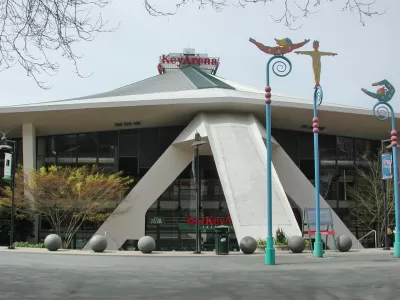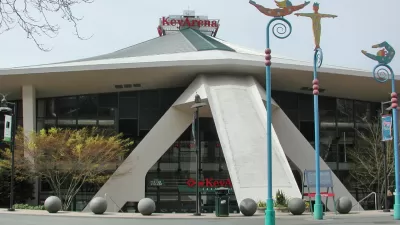The mastermind behind a failed plan to build a new NBA arena in the Seattle neighborhood of Sodo has tweaked the plan and come back to the negotiating table. A big question still waiting for an answer: Will the NBA will expand to return to the city?

Art Thiel reports: "Chris Hansen agreed [recently] to do what liberal Seattle has wanted him to do for five years: agree to fund privately his $500 million proposed basketball/hockey arena in Sodo, which he hopes will return the NBA, eight years gone, to his hometown." Hansen made that new official when he sent a letter to Mayor Ed Murray and King County Executive Dow Constantine asking for a re-hearing of the project, which originally came with a $200 million request for public money.
This time, however, Hansen, a San Francisco-based hedge fund manager, promised to drop that request and even potentially "kick in perhaps as much as $20 million to the proposed Lander Street Bridge project, long sought by the Port of Seattle, the arena’s principal opponent."
Plans for an NBA arena last crossed the national planning newswire in May 2015, when the Seattle City Council rejected a plan to give part of Occidental Avenue South, in the neighborhood of Sodo, to Hansen for the proposed arena. Samantha Bee even noticed the uncivil nature of the debate over the previous proposal.
The proposal now hinges largely on whether the city has expect to attract an expansion team to the city—relocation is unlikely with all NBA teams currently making money in their current homes.
FULL STORY: Seattle may get a new arena, no taxpayer money required

Maui's Vacation Rental Debate Turns Ugly
Verbal attacks, misinformation campaigns and fistfights plague a high-stakes debate to convert thousands of vacation rentals into long-term housing.

Planetizen Federal Action Tracker
A weekly monitor of how Trump’s orders and actions are impacting planners and planning in America.

Chicago’s Ghost Rails
Just beneath the surface of the modern city lie the remnants of its expansive early 20th-century streetcar system.

Bend, Oregon Zoning Reforms Prioritize Small-Scale Housing
The city altered its zoning code to allow multi-family housing and eliminated parking mandates citywide.

Amtrak Cutting Jobs, Funding to High-Speed Rail
The agency plans to cut 10 percent of its workforce and has confirmed it will not fund new high-speed rail projects.

LA Denies Basic Services to Unhoused Residents
The city has repeatedly failed to respond to requests for trash pickup at encampment sites, and eliminated a program that provided mobile showers and toilets.
Urban Design for Planners 1: Software Tools
This six-course series explores essential urban design concepts using open source software and equips planners with the tools they need to participate fully in the urban design process.
Planning for Universal Design
Learn the tools for implementing Universal Design in planning regulations.
planning NEXT
Appalachian Highlands Housing Partners
Mpact (founded as Rail~Volution)
City of Camden Redevelopment Agency
City of Astoria
City of Portland
City of Laramie




























